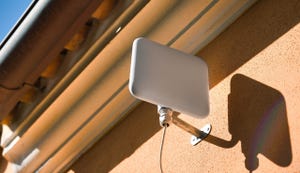Starlink and T-Mobile US send first direct text messages
SpaceX has sent and received its first text messages using its new Starlink Direct to Cell satellites and T-Mobile US' spectrum.
January 11, 2024

The LEO satellite company is not hanging about: its first half dozen Direct to Cell satellites have only been in orbit for a matter of days, having launched on 2 January. Cellular operator partner T-Mobile US marked the launch by revealing that field testing would begin imminently, but nonetheless this text messaging announcement comes sooner that we might perhaps have expected.
"The system works!" SpaceX declared on Wednesday, two days after the messages were sent. As promised, the tests used unmodified mobile phones on the ground, connected directly to the new satellites.
The successful test is an important step on the path to the launch of a commercial Direct to Cell text messaging service later this year. We still don't have a formal launch date, but given the pace at which SpaceX is progressing, we can probably expect an announcement from T-Mobile US sooner rather than later.
The US mobile operator was the first to link up with Space for Direct to Cell in mid-2022, talking up the potential of the service to virtually eliminate coverage black spots, but it is not the only one. The satellite firm has since brokered deals with Rogers in Canada, Optus in Australia, One New Zealand, Japan's KDDI, Salt in Switzerland, and Entel in Chile and Peru.
The operators in question contribute LTE in the 1.6 GHz-2.7 GHz range that can be used to transmit satellite signals. As such, Starlink is able to act like a traditional roaming partner for an operator. Via their agreements with Starlink, the operators also serve as roaming partners for one another for the Direct to Cell service.
Again, it put out a call for new operators to join the group, which will be important given the global nature of the business.
"We are working closely with regulators around the world to bring this service to their countries as soon as possible," SpaceX said.
It explained that it was able to launch and test its satellites in a fast timeframe thanks to close cooperation with the FCC, throwing in a comment about the importance of connecting people and saving lives with emergency coverage. It is clearly keen to get other telecoms authorities onside.
In the US, working with T-Mobile, it aims to add voice, data and IoT services via Direct to Cell in 2025.
That will mean the launch of a new satellite constellation to facilitate those services. In addition, it will need to put hundreds more satellites into orbit to flesh out its text messaging constellation.
No wonder SpaceX is keen to push forward the regulatory process and to bring in new operator partners. This business doesn't come cheap, and the firm will need some customers in the not-too-distant future to have any chance of breaking even.
It is two and a half years since SpaceX founder Elon Musk joked during a presentation at Mobile World Congress that his first goal for Starlink is "don't go bankrupt." The history of the satellite industry – prior to the arrival of the current crop of LEO operators – is littered with failures due to finances and this still remains a very real concern, despite the fact that services like Direct to Cell can penetrate markets that old school sat phones could not. At the time, Musk estimated that total investment in Starlink could come in at $20 billion-$30 billion.
He needs customers, partners, and expansion into new markets.
About the Author
You May Also Like










.png?width=300&auto=webp&quality=80&disable=upscale)


_1.jpg?width=300&auto=webp&quality=80&disable=upscale)